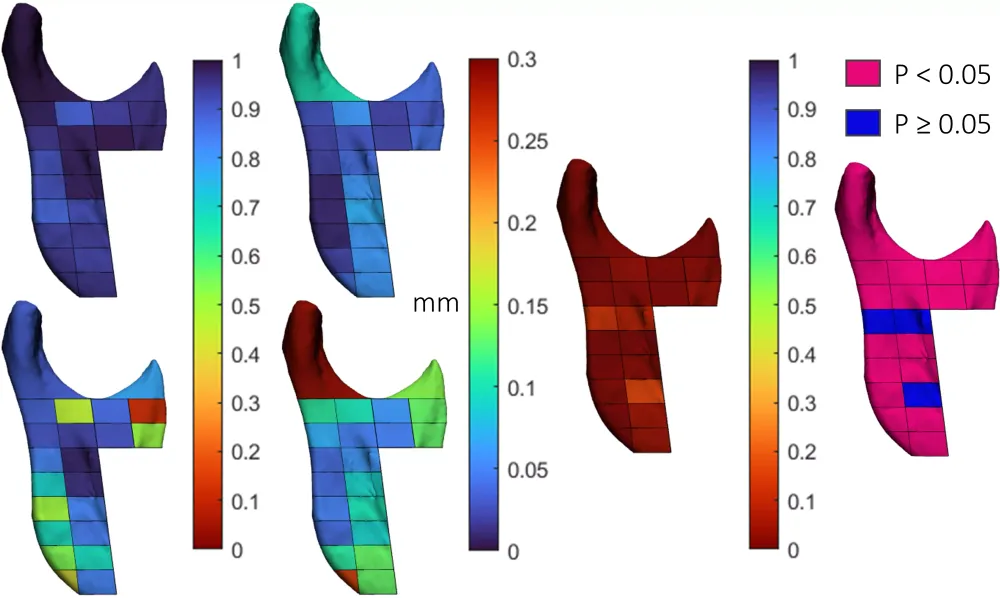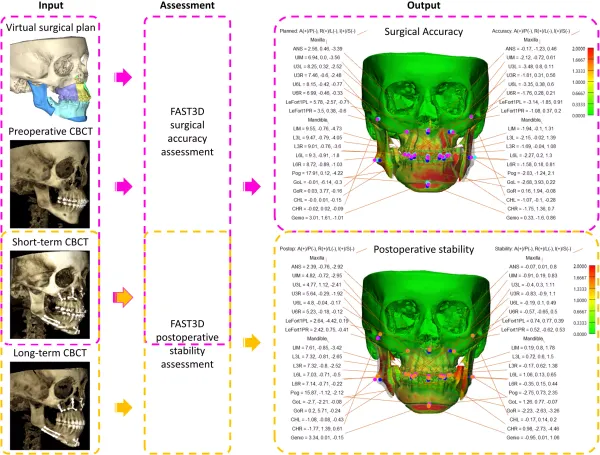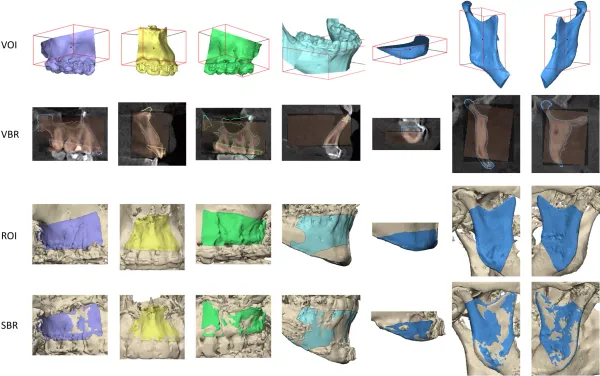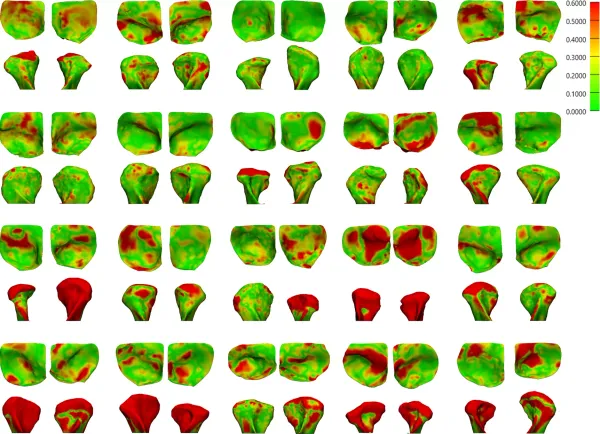Comparison of Surface- and Voxel-Based Registration on the Mandibular Ramus for Long-Term Three-Dimensional Assessment of Condylar Remodelling following Orthognathic Surgery
Authors
Holte MB, Sæderup H, Pinholt EM

Abstract
Objectives
The purpose of the present study was to validate and compare the accuracy and reliability of surface- and voxel-based registration on the mandibular rami for long-term three-dimensional (3D) evaluation of condylar remodelling following Orthognathic Surgery.
Methods
The mandible was 3D reconstructed from a pair of superimposed pre- and postoperative (two years) cone-beam computerized tomography scans and divided into the condyle, and 21 ramal regions. The accuracy of surface- and voxel-based registration was measured by the absolute mean surface distance of each region after alignment of the pre- and postoperative rami. To evaluate the reliability, mean absolute differences and intra class correlation coefficients (ICC) were calculated at a 95% confidence interval on volumetric and surface distance measurements of two observers. Paired t-tests were applied to statistically evaluate whether the accuracy and reliability of surface- and voxel-based registration were significantly different (p < 0.05).
Results
A total of twenty subjects (sixteen female; four male; mean age 27.6 years) with class II malocclusion and maxillomandibular retrognathia, who underwent bimaxillary surgery, were included. Surface-based registration was more accurate and reliable than voxel-based registration on the mandibular ramus two years post-surgery (p < 0.05). The inter observer reliability of using surface-based registration was excellent, ICC range [0.82–1.00]. For voxel-based registration, the inter observer reliability ranged from poor to excellent [0.00–0.98]. The measurement error introduced by applying surface-based registration for assessment of condylar remodelling was considered clinical irrelevant (1.83% and 0.18 mm), while the measurement error introduced by voxel-based registration was considered clinical relevant (5.44% and 0.52 mm).
Conclusion
Surface-based registration was proven more accurate and reliable compared to voxel-based registration on the mandibular ramus for long-term 3D assessment of condylar remodelling following Orthognathic Surgery. However, importantly, the performance difference may be caused by an inappropriate reference structure, proposed in the literature, and applied in this study.





